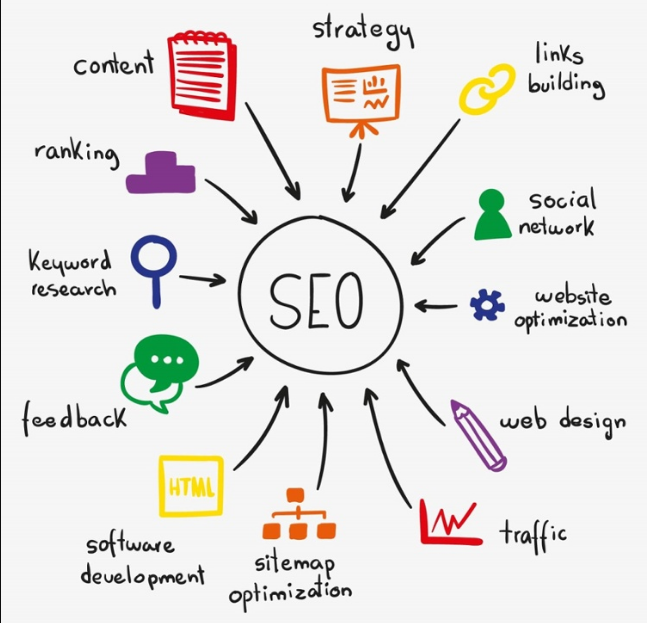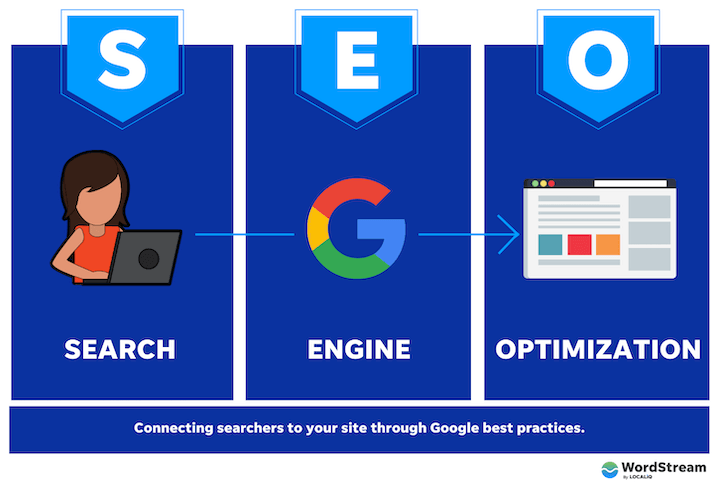Understanding the Function of Customer Experience in Modern SEO Practices
In an era where digital existence can make or break an organization, understanding the intersection between customer experience (UX) and contemporary Search engine optimization practices is much more critical than ever before. As search engines develop, they increasingly prioritize sites that offer seamless, interesting experiences to users. Exactly how do these components specifically influence search rankings?
The Advancement of Search Engine Optimization
Over the years, the landscape of seo (SEO) has gone through substantial change, showing the dynamic nature of electronic innovation and customer habits. Search engine optimization was mainly concerning keyword stuffing and link-building approaches, concentrating greatly on controling search engine formulas to enhance web site rankings. As search engines came to be much more sophisticated, these techniques started to shed efficiency and significance.

In addition, mobile optimization and voice search have ended up being essential parts of search engine optimization methods. With the expansion of smartphones, guaranteeing internet sites are mobile-friendly has actually ended up being a requirement. Voice search, driven by digital aides like Siri and Alexa, has even more shifted SEO practices towards all-natural language processing and conversational content.
Basically, the evolution of SEO shows a more comprehensive pattern in the direction of boosting customer contentment by lining up digital web content with the nuanced expectations of modern-day individuals.
Trick UX Aspects in Search Engine Optimization
In the realm of search engine optimization, key customer experience (UX) components are essential for boosting both customer fulfillment and search engine rankings. Central to this is the convenience of navigating, which makes sure customers can with ease discover details without unneeded clicks. A well-structured navigating system enables online search engine to index web pages better, adding to higher visibility. Additionally, mobile responsiveness is crucial in today's electronic landscape, as a considerable portion of internet website traffic originates from smart phones. Internet sites enhanced for mobile use not only foster a seamless individual experience but additionally straighten with Google's mobile-first indexing method.
Clear call-to-action (CTA) buttons assist users in the direction of desired actions, improving conversion prices. Accessibility can not be neglected; ensuring that content is easily accessible to customers with specials needs broadens reach and complies with internet standards. Incorporating these UX elements properly sustains Search engine optimization initiatives by advertising user retention and helping with search engine understanding of site content.
Effect of Site Speed
While frequently underestimated, the influence of website speed on user experience and search engine optimization can not be overstated. In today's hectic electronic setting, individuals expect websites to fill swiftly and successfully. Google has acknowledged this demand, integrating site speed as an essential ranking element in its search formulas. A slow-loading website can result in increased bounce rates, as customers are most likely to abandon a website if Look At This it takes even more than a couple of secs to tons. This not only influences user engagement yet additionally lessens the internet site's exposure in search engine results web pages (SERPs)
Additionally, site rate directly affects conversion prices and customer fulfillment. By resolving these technological elements, sites can enhance their speed, thereby enhancing individual experience and increasing their SEO performance. Inevitably, spending in website rate is investing in both customer contentment my website and search engine exposure, crucial aspects in the electronic market.
Mobile-Friendliness Significance
Adapting to mobile-friendliness has actually come to be an essential part of reliable SEO methods. As smart phones increasingly control internet use, search engines like Google have actually moved in the direction of mobile-first indexing, suggesting the mobile version of a web site is focused on in ranking formulas (seo adelaide). Mobile-friendliness is not simply a trend however a requirement in enhancing a site's internet search engine performance

Furthermore, mobile-friendliness effects local search engine optimization considerably. As customers commonly look for neighborhood info on-the-go, having a mobile-optimized site enhances visibility in regional search engine result, driving foot website traffic and conversions for organizations. Websites that fall short to prioritize mobile-friendliness danger shedding out on useful traffic, as users are much less likely to engage with sites that are tough to browse on their mobile phones. Integrating mobile optimization into SEO methods is important for maintaining affordable benefit in the digital landscape.
Enhancing Navigating for SEO
As businesses identify the need of mobile-friendliness in search engine optimization, another critical facet emerges: improving navigating - seo adelaide. Reliable navigating is crucial as it directly affects individual experience (UX), which browse engines significantly prioritize. A well-structured website makes certain that individuals can quickly find the web content they are searching for, reducing bounce rates and increasing dwell time, both of which are critical SEO metrics
To improve navigation, websites have to adopt a sensible hierarchy that overviews users effortlessly via material. This includes clear, concise my blog food selection labels and an intuitive layout, which collectively enhance the user journey. Using breadcrumb trails can further help individuals in understanding their location within an internet site, cultivating a feeling of positioning and control.
Making sure navigation is receptive throughout devices warranties that users delight in a constant experience, important in today's multi-device world. Ultimately, boosting navigating is not merely concerning aesthetics; it is a strategic strategy to optimizing both customer involvement and search engine performance.
Verdict
Integrating individual experience right into modern search engine optimization techniques is extremely important for maximizing online search engine rankings and enhancing web site performance. As online search engine prioritize individual intent, essential elements such as site speed, mobile-friendliness, and instinctive navigating play an important role in conference customer expectations. By focusing on these facets, web sites can lower bounce prices and increase involvement, straightening digital web content with individual needs. This critical positioning ultimately results in enhanced exposure and higher conversion rates in a significantly competitive electronic atmosphere.
In the world of search engine optimization, key user experience (UX) elements are essential for boosting both user complete satisfaction and search engine rankings. Integrating these UX elements effectively sustains Search engine optimization initiatives by advertising individual retention and assisting in search engine understanding of site material.
As customers frequently look for local details on-the-go, having a mobile-optimized website enhances visibility in neighborhood search outcomes, driving foot web traffic and conversions for companies.Integrating user experience into modern-day Search engine optimization techniques is vital for optimizing search engine rankings and improving website performance. As search engines focus on customer intent, important components such as website speed, mobile-friendliness, and user-friendly navigation play a crucial role in meeting customer assumptions.